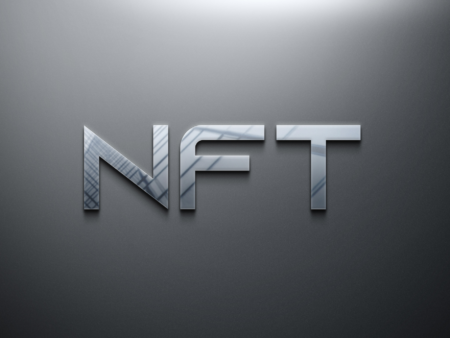Exchange.art, the NFT marketplace built on Solana blockchain, introduces “Personal Gallery Space” to make the marketplace more inclusive and accessible for individuals in the crypto art industry.
In an effort to advance the condition of the digital art market, Exchange.art, the NFT marketplace built on the Solana blockchain, today announced the opening of its “Personal Gallery Space.” The marketplace will become even more inclusive and accessible with the addition of this new option for individuals participating in the crypto art industry.
Let’s examine the contents of this gallery in more detail.
The “Personal Gallery Space” is a new feature that NFT Marketplace on Solana has announced
In an effort to elevate the digital art industry and entice more art institutions to the Web3 digital art world, Exchange.art, a decentralized NFT marketplace for buying and selling, announced today that it is opening a public gallery space for artists and curators.
Exchange.art is making improvements and solutions in response to the rising interest in this industry in order to position itself as one of the top NFT markets within the Solana ecosystem.
The “Personal Gallery Space” acts as a focal point where exhibitors and artists can present their work, emphasizing only the aesthetic component and minimizing the economic and commercial part.
With all their differences from the crypto world and the artistic component progressively fading in favor of the monetary one, non-fungible token exchange markets are often considered as commodification hubs.
To ease traditional and digital artists into blockchain technology models, the area can be considered as a collection or a piece of one.
This functionality is the first of many steps the NFT marketplace will take to provide more artistic solutions to the gallery and curator audience, who will be able to elevate their artistic creations in the web3 area, recreating the “gallery” environment.
Alex Fleseriu, the CEO of Exchange.art, commented on the news:
We are excited to announce the launch of our Gallery feature, which is the first of many steps to bridge the gap between the traditional art world and Web3. Our goal is to shift the focus from commerce to art, creating a digital space that feels just like a physical art gallery. With these updates, we aim to create an inclusive platform that welcomes the traditional art community into Web3 and facilitates their seamless transition into the digital age.
Numbers from the Exchange.art marketplace
A Solana chain-based NFT marketplace called Exchange.art is still making its impact in the world of cryptographic art.
Even though the team has launched numerous campaigns to gain more attention, such as the addition of the “personal gallery space” function, the decentralized marketplace’s figures are still far from the success that was hoped for.
According to a survey by UBS and Art Basel Exchange, the art market on blockchain is expanding rapidly, with sales rising from $605,000 in 2019 to the present $2.9 billion.Regarding the quantity of transactions and volumes registered on the site, art has a minor impact on the scene.
The revenue in this case comes from exchange fees and royalties. It doesn’t depend on the subjective attractiveness of one collection over another. The hunger and splendor of this form of business are actually calculated by financial data and analytics.
A small number of on-chain transactions completed by the platform in the last 30 days suggest that neither traders nor artists are particularly interested in trading NFT on this platform.
The Solana ecosystem’s genuine flagship marketplace, Magic Eden, on the other hand, handles practically all of the NFT volume on the chain and has seen over 30,000 transactions only in the past day.
In reality, this marketplace replaces all previous rivals, including Exchange.art, Metaplex, Solanart, Tensor, Solsea, and DigitalEyez, as the primary hub for digital art traded on Solana.
It is believed that Exchange.art would be able to draw additional participants to its infrastructure, increasing the number of internal transactions and on-chain sales, in order to create a less monopolistic market with more competition.
The Solana NFT Marketplace
The Solana blockchain, with sales of almost $85 million in April 2023, is a focal point for the non-fungible token market despite losing one of its greatest investors with the failure of the FTX exchange last year.
According to an analysis of past NFT market data, Solana is the third most valuable web3 infrastructure behind Ethereum and the Ronin chain in terms of sales volume.
In just over three years since its launch, Solana has transacted a total of over $3.96 billion.
The blockchain, created by Anatoly Yakovenko and run by the Swiss-based Solana Foundation, saw $2.6 million in sales over the past seven days from the three most popular collections: Mad Lads, Famous Fox Federation, and Chads.
Mad Lads, which rose from a floor price of 6.9 SOL to a current price of 63.8 SOL, was the fourth best-selling collection in the past 30 days when taking into account all active blockchains.
The titles DeGods, Solana Monkey Business, Degenerate Ape Academy, and Okay Bears can be found in historical collections, with prices ranging from 50 to 170 SOL.
Therefore, it is evident that Solana has a significant impact on this industry, both in terms of the volume it creates and the ease with which customers may navigate across marketplaces.
Despite this, it is also obvious that there is less buzz and public interest than there was during the NFT explosion phase in late 2021 and early 2022.
The amount of non-fungible tokens created on the blockchain, which is currently on the decline with values at their lowest levels since September 2021, provides evidence of this.
We didn’t see an increase in these data until the end of February and the beginning of March, which was swiftly followed by a decline in April.











